‘I’m used to going deep into narratives, and I just loved the story of this house,’ says actress and director Sara Sugarman, who is selling her Grade II* listed Georgian home in a historic Kentish dockyard. Her roles include TV series Grange Hill and Juliet Bravo, movies Sid & Nancy and Mr Nice, and she has also directed Lindsay Lohan in Confessions of a Teenage Drama Queen and Jonathan Pryce in Very Annie Mary, earning the Sundance Film Maker’s prize along the way. ‘I wanted pure authenticity, so I researched everything I could about the history of the house and 1830s design and got a real hunger for it.’
‘Every time I came down to visit from London, I saw a lorry that had “Eat More Chips” emblazoned on the side’
The 4,500 sq ft house sits behind wrought iron railings and a double fronted façade of yellow stock brick, which are punctuated by shuttered box sash windows and a grand pilastered porch. The four storey building is all period drama. There’s a lime-plastered basement kitchen and an original Georgian colour palette on the walls, with Greek revival details throughout. Sugarman has carefully sourced four-poster beds, ornate marble fireplace surrounds, oil paintings of ships and even specially commissioned mahogany loo seats to keep the home in character.
‘While interiors are worthy of a Jane Austen film set, what’s outside is just as compelling,’ says Sugarman who is about to start shooting a hush-hush project in upstate New York. ‘The light changes throughout the day and is so Turner-esque. It’s a wonderful place to write.’
Off the northern coast of Kent, on the Isle of Sheppey, Sugarman’s extraordinary home forms part of a collection of Grade II* and Grade II listed houses on Dockyard Terrace, built for top-brass naval officers around the time of the Napoleonic wars. It is within the Royal Naval Dockyard conservation area – often visited in the nine years since she has owned it by her creative coterie, including the late Alan Rickman, who wrote about it in his diaries, Madly, Deeply. It’s part of a site originally established in the 1660s by an even earlier diarist, Samuel Pepys, who was clerk of the acts of the navy board, and was only closed 300 years later.
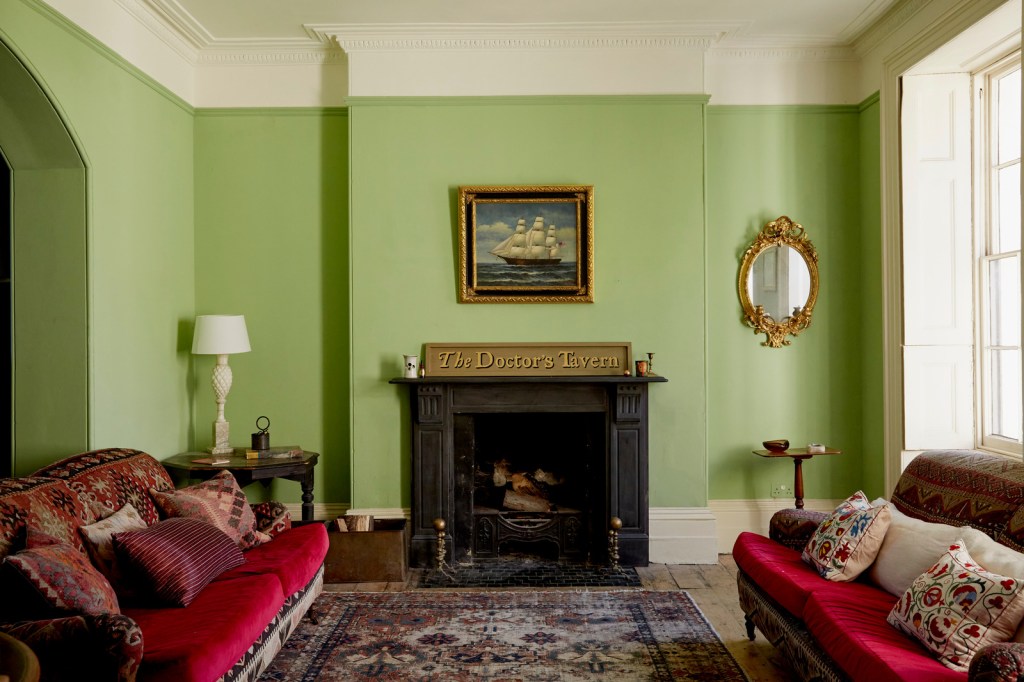
The homes are known to heritage and architecture buffs as Spitalfields’ second act: with the entire site having fallen into a parlous state, the Spitalfields Historic Buildings Trust bought it 2010, saving it from soulless redevelopment. Largely thanks to the heroic efforts of Will Palin, former director of Save Britain’s Heritage, the Sheerness Dockyard Preservation Trust was established – and it was from Palin himself, a good friend, that Sugarman bought her own four-reception, four-bedroom home. Built between 1829 and 1833, it was allocated to the dockyard’s senior medical officer, and was accordingly grand.
‘I really didn’t want to commit to buying the house as I was convinced it would be too much of a money pit,’ says Sugarman, who was brought up in Rhyl, Wales. ‘But I just kept getting drawn back to it, and in the end, I gave in. It had the most wonderful warm, loving, male energy. That, and that fact every time I came down to visit from London, I saw a lorry that had “Eat More Chips” emblazoned on the side. I took it as a sign that I just needed to give into my cravings.’
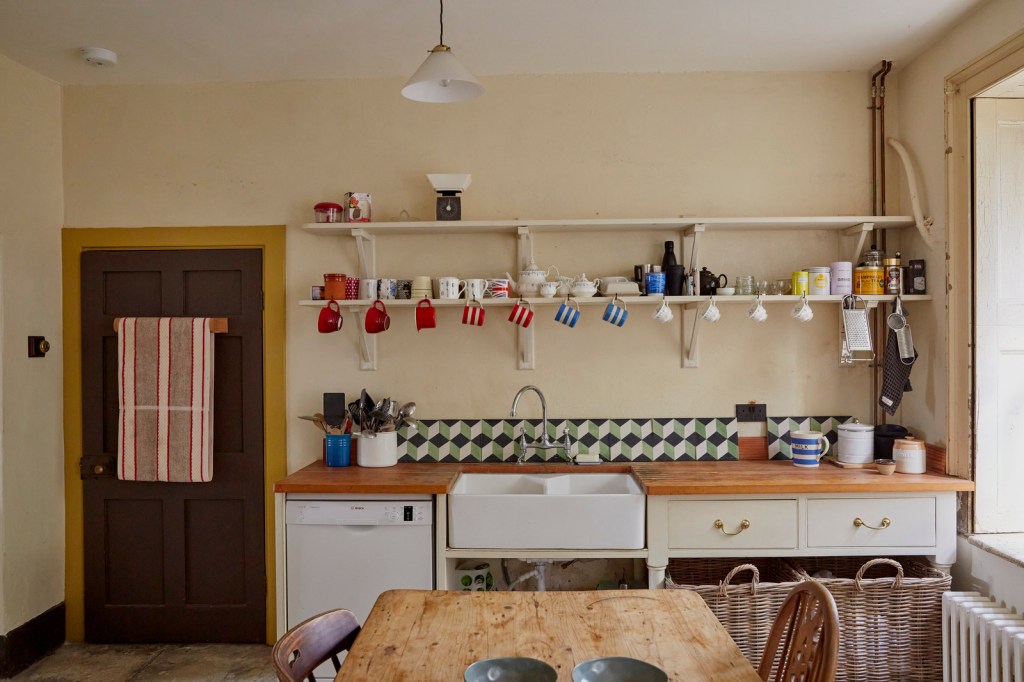
Today, it’s hard to believe Sugarman ever resisted, so extensive is her restoration. While the intensive year-long refurb wasn’t a total financial black hole, she says she certainly ‘spent enough’, despite Palin having already seen to new plumbing, electrics and some fiddly cornice repairs. A consultation with historic colour specialist Patrick Baty at Papers and Paints pinpointed a palette of mint and acid greens, saffron, sunshine yellows and floaty creams. Her team of builders spent a week stripping off centuries-old tar from the treads and spindles of the dog-leg cantilevered staircase, and pitch-pine floorboards were hand-sanded to their original grain. Rope, soaked in lime and hammered down between the boards to exclude draughts, is still in evidence.
Despite having never owned an antiques collection, Sugarman become a regular bargain hunter at online auctions in search of chests of drawers, cabinets and paintings. ‘I could easily have spent the same amount of money on furniture at Ikea,’ she laughs.
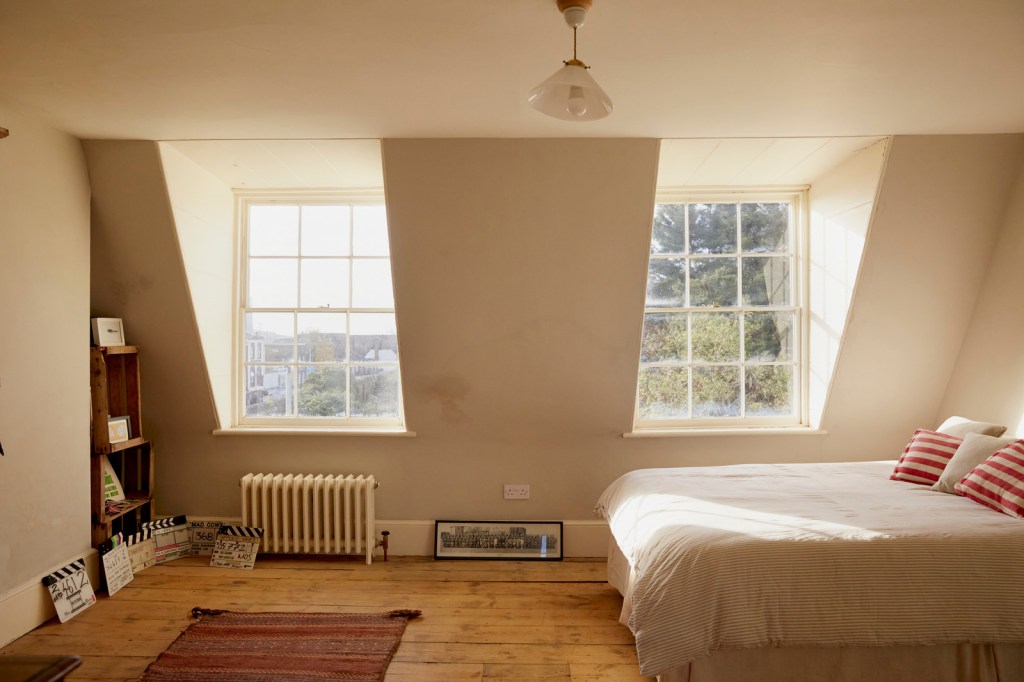
Salvaged objects include 52 brass handles, found online from an old army base and now used throughout the home, and a fine mahogany drinks bar in one of the ground-floor receptions, rescued from The Lanesborough hotel on Hyde Park Corner during a refurbishment, upon which Lady Gaga once danced. Modern luxuries are in keeping with the heritage surroundings – a Willam Holland burnished brass bateau bathtub, for example, copper sinks and nickel-plated taps.
She is also known for using her 220ft long private garden to host friends. In fact, one of the most satisfying parts of Sugarman’s time at the home has been joining another creative community – the terrace is home to fellow artists, writers and media types. The stunning Grade II* Listed Royal Dockyard Church has now been revived, used to launch start-ups, as a co-working space, brunching spot and theatre venue.
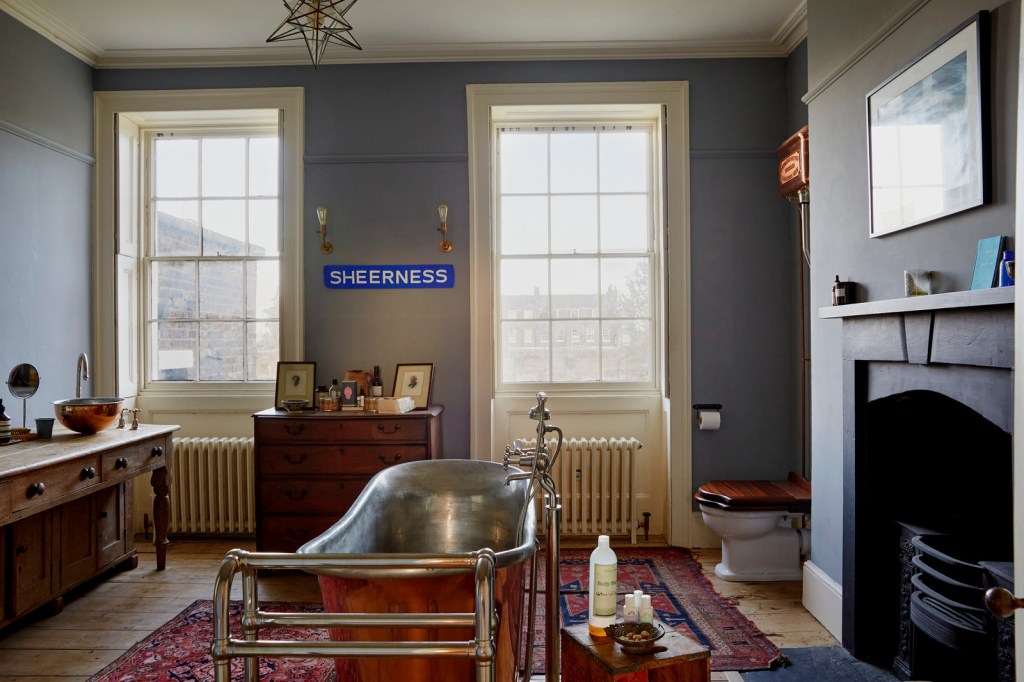
‘My neighbours and I are all very close friends, we have Sunday lunch together, and try out Kent’s best restaurants, such as The Sportsman in Seasalter,’ Sugarman says. ‘We have even spent Christmas and holidays abroad together.’
Whoever takes over her place on the terrace, then, will need to fit in. As Sugarman has largely used it as a weekender and holiday home, and has a new pad off the Portobello Road, in West London, she has decided to put the freehold house on the market, for £885,000, with inigo.com.
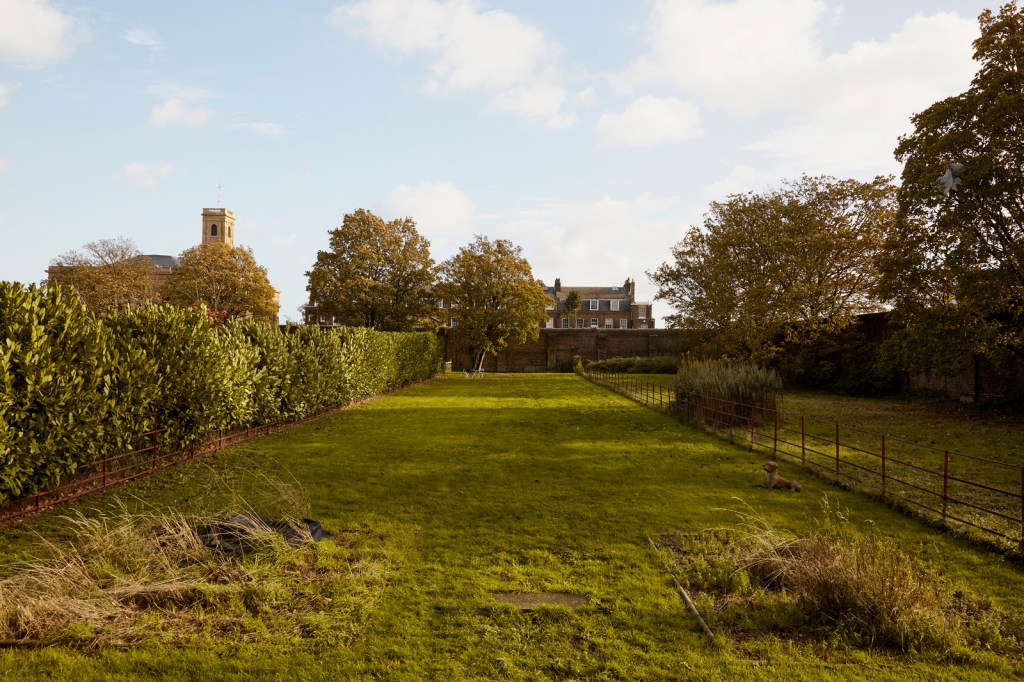
As the Isle of Sheppey and this once down-at-heel part of Kent is finally on the up, it’s bound to appeal to heritage conscious DFLers – Sheerness-on-Sea train station is a five-minute walk from Dockyard Terrace, connecting to Sittingbourne for direct trains to London Victoria and London Kings Cross, with total journey times of 90 and 80 minutes respectively.
‘I’m sad to go, but there is so much amazing space here, I feel the house deserves to be used and enjoyed full-time by a large family,’ Sugarman says. ‘But I’ve already had lots of invitations to come and spend weekends with my neighbours – so it’s definitely not goodbye.’

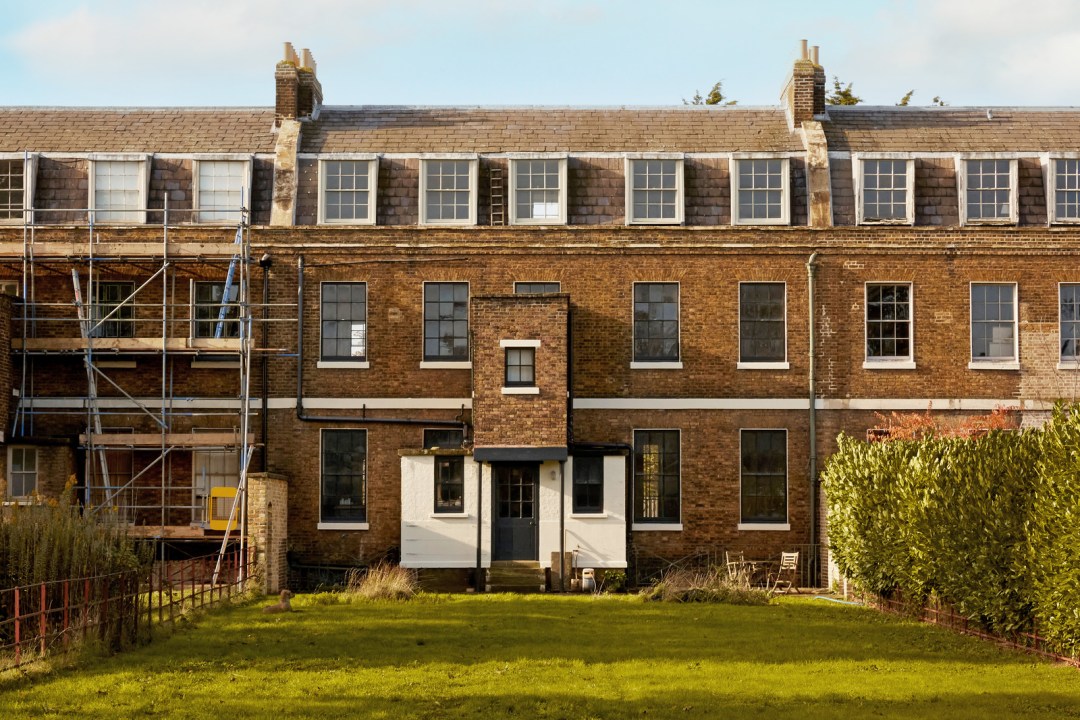
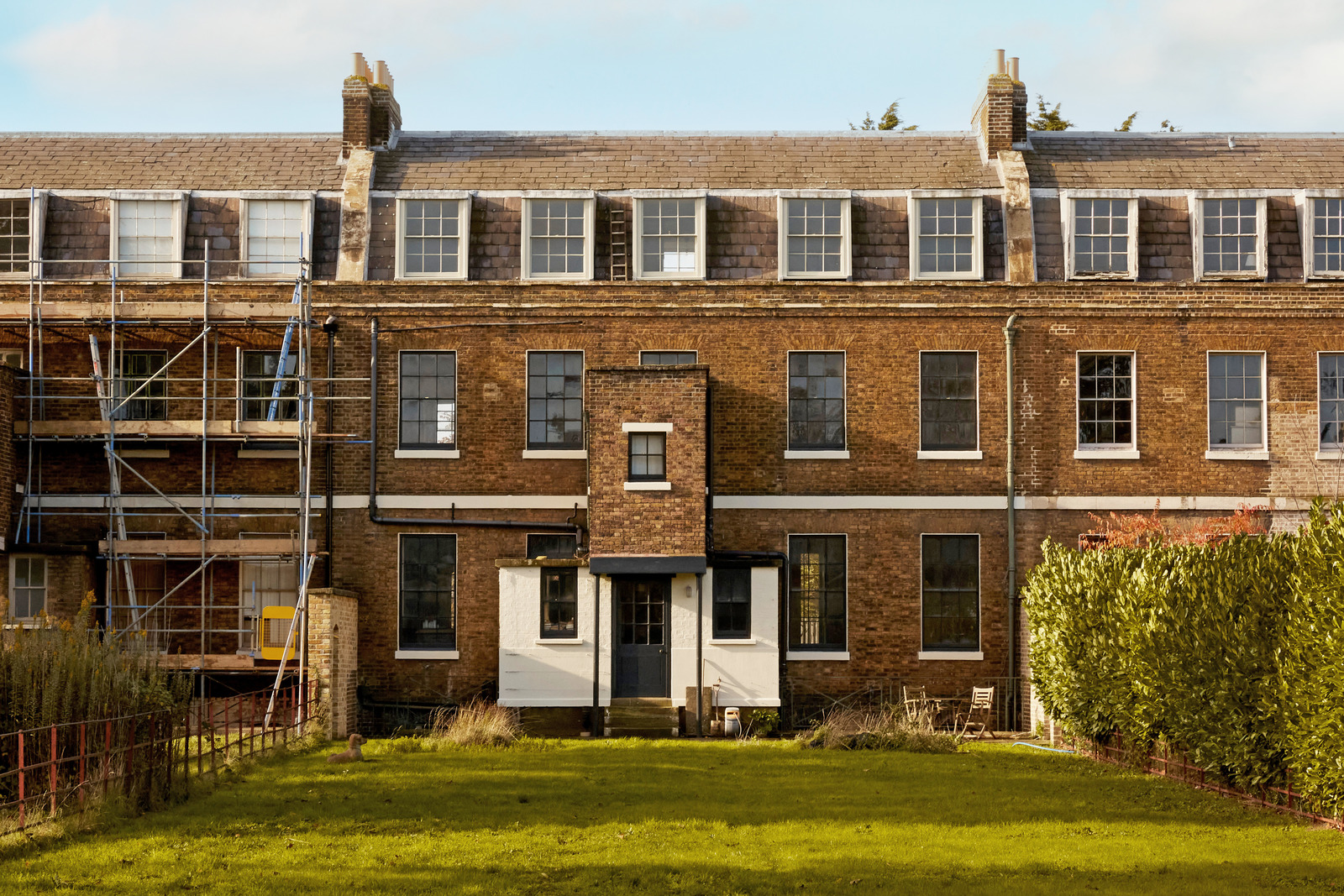




Comments